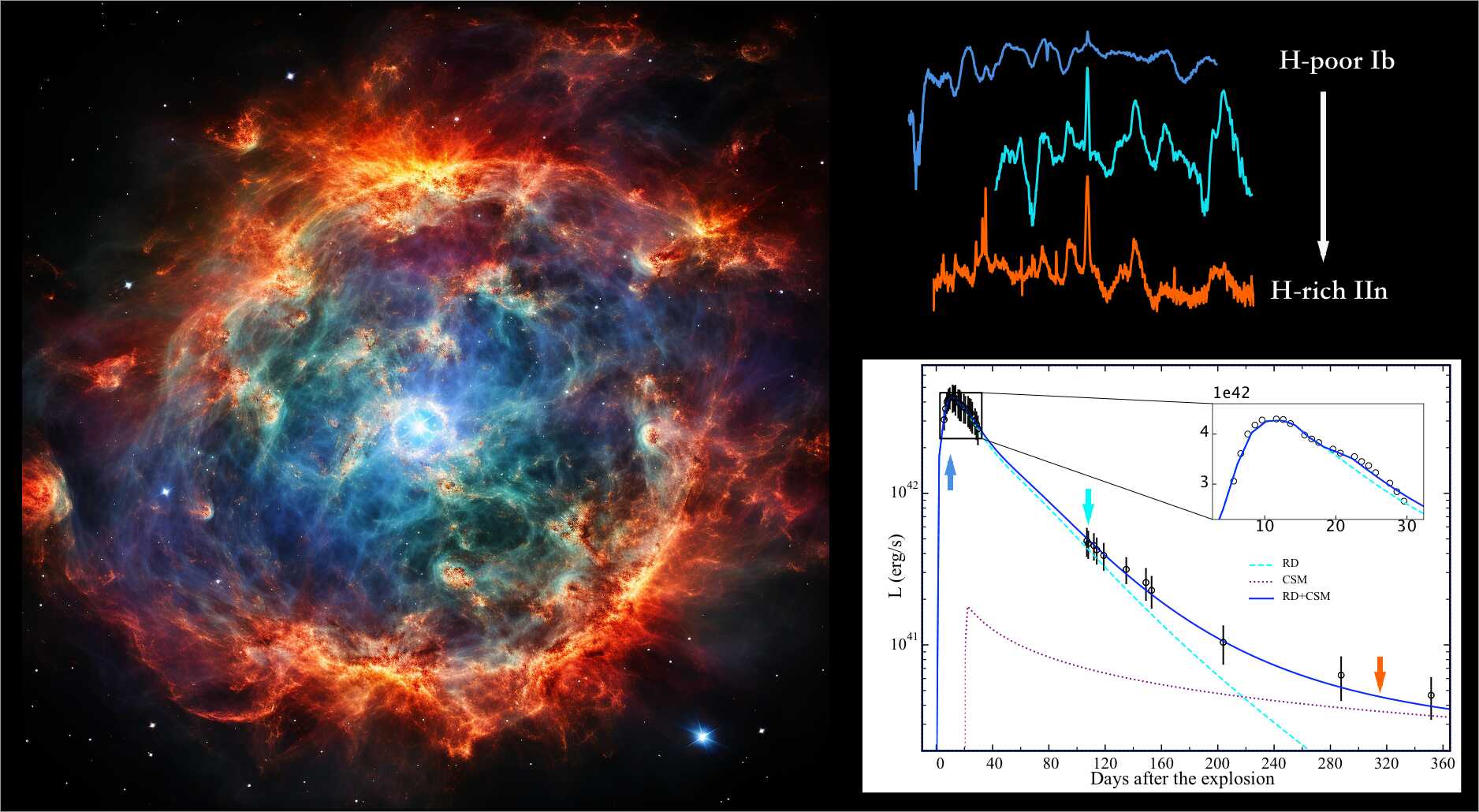An international research team led by the Yunnan Observatories of the Chinese Academy of Sciences has made significant advancements in the observational study of the metamorphic supernova SN 2014C. Their work provides crucial insights into the explosion mechanisms of this rare type of supernova and the final evolutionary stages of its progenitor star.
This study was published in The Astrophysical Journal.
SN 2014C is a well-known supernova that has undergone a remarkable transformation in its spectral classification, evolving from an initially hydrogen-poor Type Ib to a hydrogen-rich Type IIn. This transformation suggests that the progenitor star of SN 2014C had nearly completely shed its outer hydrogen envelope before the explosion, leaving behind a dense circumstellar material (CSM) in its vicinity. This rare and complex phenomenon has intrigued astronomers for the past decade.
Using observations from the Lijiang 2.4-meter telescope, the researchers released the most comprehensive early data on SN 2014C. These data provided earlier evidence of the interaction between the supernova and the CSM, filling the gap in information about the inner layers of the CSM.
By constructing a model that incorporates radioactive decay and delayed interaction, the researchers successfully explained the complex and variable light curve behavior of SN 2014C.
Their observations revealed the detailed physical processes during the initial stages of SN 2014C's explosion and provided key clues to its subsequent spectral transformation. By integrating early photometric data, late-time spectral data, and radio and infrared observations spanning a decade, the research team discovered that the CSM around SN 2014C is not uniformly distributed; instead, it exhibits a U-shaped structure. This intricate circumstellar environment significantly influences the supernova's light curve and spectral evolution.
This study provides valuable insights into studying metamorphic supernovae. The work was funded by the National Key Research and Development Program of China, and the National Natural Science Foundation of China, among others.

Figure 1: Left: A schematic diagram of SN 2014C and its outer CSM, showing the gradual interaction between the SN ejecta (blue-white circle in the middle) and the outer CSM after the explosion. Top-right: Spectral evolution from a hydrogen-poor SN Ib to a hydrogen-rich SN IIn. Bottom-right: Bolometric luminosity and its model fitting, revealing the additional energy provided by the SN-CSM interaction present from the early stages. The colored arrows indicate the corresponding light curve epochs for the spectral evolution shown above. (Image by ZHAI Qian).






